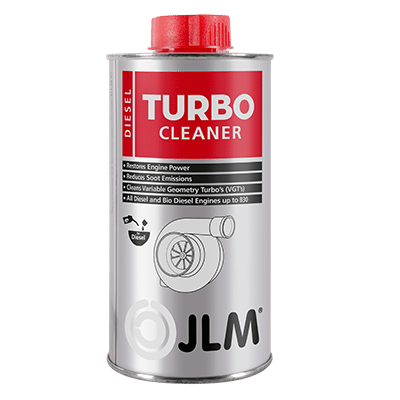Keeping vehicle emissions to a minimum has been a focus of the mechanical engineering industry for quite some time. The introduction of DPF filters (for diesel engines) and EGR valves was a key landmark in this process.
Exhaust Gas Recirculation (EGR) valves were designed to reduce harmful emissions and will be found in both petrol and diesel cars. It is vital to keep this component clean and clear to ensure sufficient performance.
WHAT IS AN EGR VALVE?
An EGR valve is a device found in the exhaust system of internal combustion engines, such as those in cars and trucks. Its primary function is to reduce the formation of harmful nitrous oxides (NOx) emissions during the combustion process.
There are two main types of EGR valves used in automotive applications:
- Mechanical EGR Valves: These are more traditional, and are often operated through a diaphragm or linkage connected to the engine’s intake and exhaust systems. They are controlled by engine vacuum or exhaust backpressure.
- Electronic EGR Valves: Modern vehicles commonly employ electronic EGR valves, which use sensors and electronic control units (ECUs) to manage the process more precisely. These can adjust the flow of exhaust gases based on factors such as engine load, temperature, and emissions requirements.
HOW DO THEY WORK?
EGR valves reduce NOx emissions by diverting some of the exhaust gases produced during combustion and reintroducing them into the engine’s intake manifold.
By mixing these inert exhaust gases with fresh air and fuel, the combustion temperature is lowered, which helps mitigate the formation of NOx, a major contributor to air pollution and smog.
The engine’s computer controls the valve’s opening and closing to ensure the right amount of exhaust gas is recirculated based on factors like engine load and temperature.
The EGR valve thus plays a vital role in promoting cleaner air quality, enhancing fuel efficiency, and ensuring compliance with environmental regulations in modern vehicles.
HOW DO I KNOW MY EGR VALVE NEEDS CLEANING?
Cleaning or servicing your EGR is a task that can help maintain your vehicle’s performance and reduce emissions. Here are some signs that may indicate your EGR valve needs cleaning:
- Engine Warning Light: If the EGR valve or related components, such as the EGR system sensors, become clogged or malfunction, it can trigger the Engine Warning Light on your vehicle’s dashboard. You can use an OBD2 scanner to retrieve error codes that may point to EGR system issues.
- Rough idle or misfiring: A clogged EGR valve can disrupt the air-fuel mixture in the engine, leading to rough idling or engine misfires. If you notice your engine running unevenly or experiencing a loss of power, it could be related to the EGR system.
- Increased emissions: A malfunctioning EGR valve can result in higher emissions levels, which can cause your vehicle to fail emissions tests. If you fail an emissions inspection or notice increased tailpipe emissions, it may be a sign of EGR system problems.
- Poor fuel efficiency: Reduced fuel efficiency is another potential indicator of EGR valve issues. When the EGR valve is dirty or stuck open, it can affect the engine’s efficiency, leading to decreased miles per gallon (MPG).
- Excessive carbon buildup: If you inspect the EGR valve and notice excessive carbon buildup on or around it, this is a clear sign that it needs cleaning. Carbon deposits can hinder the valve’s operation and effectiveness.
- Stalling or surging: A clogged EGR valve can cause irregular engine behaviour, such as stalling when coming to a stop or surging while driving at a consistent speed.
If you experience any of these symptoms, it’s a good idea to have your EGR valve and related components inspected and cleaned by a qualified mechanic.
Regular maintenance, including EGR valve cleaning, can help ensure your vehicle runs smoothly, meets emissions standards, and achieves optimal fuel efficiency.
WHAT EQUIPMENT DO I NEED TO CLEAN AN EGR VALVE?
Cleaning an EGR valve typically requires some basic tools and cleaning supplies. Here’s a list of equipment you’ll need:
- Safety gear, such as gloves and goggles
- Spanners or sockets to remove the valve from the engine
- Cleaning solvents such as JLM Air Intake and EGR spray
- Soft-bristle brushes
- Compressed air to blow away loose debris
- Rags or towels
- Service manual or repair guide
- Replacement gasket in case of damage during the cleaning process
Before attempting to clean your EGR valve, it’s important to consult your vehicle’s service manual for guidance on the specific location and removal procedure of the EGR valve, as well as any manufacturer-recommended cleaning methods.
Additionally, make sure the engine is cool before working on the EGR valve to avoid burns or injuries.
If you’re not confident in your ability to clean the EGR valve yourself, it’s advisable to seek the assistance of a qualified mechanic.
CLEANING AN EGR VALVE STEP-BY-STEP
Cleaning an EGR valve involves several steps. Here’s a general guide to help you clean yours. Be sure to consult your vehicle’s service manual for specific instructions and safety precautions, as procedures may vary by make and model:
- Gather your tools and supplies.
- Consult your vehicle’s service manual to locate the EGR valve. It is typically located near the intake manifold or exhaust manifold.
- As a safety precaution, disconnect the negative terminal of your car battery to prevent any electrical issues.
- Remove the EGR Valve:
- Use spanners or sockets to carefully remove any bolts or nuts holding the EGR valve in place.
- Disconnect any electrical connectors or vacuum lines attached to the EGR valve.
- Gently detach the EGR valve from its mounting.
- Examine the EGR valve and its passages for carbon deposits. Carbon buildup is a common issue that can hinder the valve’s operation.
- Clean the EGR Valve:
- Spray the EGR valve and its passages with the EGR valve cleaner or solvent. Allow it to soak for a few minutes to loosen carbon deposits.
- Use soft-bristle brushes or toothbrushes to scrub away the loosened carbon deposits. Be gentle to avoid damaging the valve.
- Use compressed air to blow away any remaining debris and solvent residue.
- Check the condition of the gasket that seals the EGR valve. If it’s damaged or worn, replace it with a new one.
- Reinstall the EGR Valve:
- Carefully reattach the EGR valve to its mounting.
- Reconnect any electrical connectors or vacuum lines.
- Secure the EGR valve in place using the appropriate bolts or nuts.
- Reconnect the negative terminal of the car battery.
- Use an OBD2 scanner to clear any error codes and reset the Engine Warning Light.
- Take your vehicle for a test drive to ensure that it runs smoothly and that the Engine Warning Light remains off.
Remember that this is a general guide, and the specific steps may vary depending on your vehicle’s make and model. Always refer to your vehicle’s service manual for the most accurate and vehicle-specific instructions.
If you are uncomfortable performing these steps yourself, it’s advisable to seek professional assistance from a qualified mechanic.
HOW TO CLEAN AN EGR VALVE WITHOUT REMOVING IT
The steps to cleaning an EGR without removing it are much the same as the above, without the removal and replacement of the valve. Cleaning without removal can temporarily solve EGR issues, but it may not be as effective as complete removal and cleaning.
If you continue to experience issues, or if the valve becomes severely clogged, it may be necessary to remove it for a more thorough cleaning or replacement. Always consult your vehicle’s manual and follow safety precautions when working on your vehicle’s EGR system.
Alternatively, and more conveniently, you can use JLM’s EGR and Air Intake Cleaner to clean out the whole system, and prevent soot build up in the future.
For a thorough cleaning of the EGR, air intake, and combustion system all in one, take a look at the JLM Air Intake Extreme Clean Toolkit. A sophisticated and professional system, this will restore efficient airflow to your vehicle.
FINDING THE BEST EGR VALVE CLEANER
At JLM, we have a range of products designed to remove and prevent exhaust emissions and EGR valve build up. Whether you drive a petrol or diesel engine, you’ll find a solution in our EGR Valve Cleaning range.

